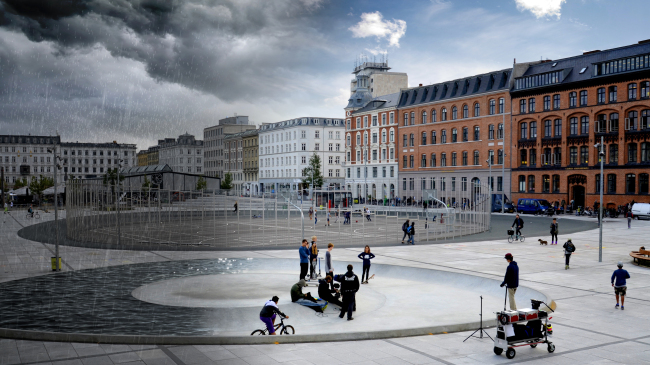[Weekender] Water management key for urban planning
Denmark sets benchmark for creative solutions
By Korea HeraldPublished : April 10, 2015 - 20:37
As water, life’s most critical resource, becomes scarce, strategic and advanced water management is emerging as a key policy task for cities.
Cities in Denmark are spearheading the best practices in prioritizing water management in their urban planning policy development.
As an archipelago between the North Sea and the Baltic Sea, Denmark has turned its natural adversity into a national advantage throughout history.
With the tide of global warming inching closer, the country is investing in climate adaption measures to spur green growth.
Cities in Denmark are spearheading the best practices in prioritizing water management in their urban planning policy development.
As an archipelago between the North Sea and the Baltic Sea, Denmark has turned its natural adversity into a national advantage throughout history.
With the tide of global warming inching closer, the country is investing in climate adaption measures to spur green growth.

A culture of seamless cooperation between the government, business and citizenry allows innovative ideas to be realized in water management.
Copenhageners swim, sail and fish in the Harbor Baths on the city waterfront all year round.
“The idea of swimming in the harbor would have been out of the question 15 years ago, as it was polluted with wastewater,” Tanya Jacobsen, project manager at State of Green, which promotes Danish green technologies worldwide, told The Korea Herald.
“But after the sewers were modernized, water quality improved dramatically and the oceanfront became a popular bathing spot.”
In addition to arousing a sense of pride and ownership in the neighborhood, the new beach pushed up property prices in the nearby areas, luring additional investment.
“The key to our success is integrating environmental, economic and social strategies in water management and city development,” said Iver Hoj Nielsen, who leads the public relations of Denmark’s State of Green.
“City planners, citizens, environmentalists, architects, engineers, consultants and contractors collaborate using flexibility and creativity, cultivating urban areas like gardeners.”
Canals and lakes in cities across Denmark help store storm water and prevent sewer overflows. They also serve as recreational areas with abundant wildlife.
In Copenhagen’s Saint Kjelds Quarter, rain gardens, water towers and grassy walkways were incorporated into the landscape architecture to handle cloudbursts and floods. Green roofs absorb rain and insulate and cool buildings.
“In Korea, sustainable development has been more rhetoric than reality,” said professor Yun Sun-jin of Seoul National University’s Graduate School of Environmental Studies.
“Although we are not desperately short of water, flood problems will exacerbate in the future.”
Korean cities have large impervious tracts, which deluge sewers during downpours and heat up the temperature, she said.
In an effort to alleviate the problem, the Seoul Metropolitan Government said it will create 1,000 forests as part of the Seoul Declaration produced during the ICLEI World Congress 2015 in Seoul.
Stressing the link between water and electricity supply, Yun said energy should be produced locally by tapping renewable sources, as it can safeguard a stable supply of electricity during natural disasters.
Korea also needs to curtail reclamation projects in rivers and tidelands, which expose the developments to the dangers of inundation, rising sea levels and tsunamis.
“Climate adaptation should merge with urban planning, and inter-ministry cooperation must improve,” the professor said.
She emphasized that governments, companies and citizens must get together and share profits from development projects to consolidate interests in sustainable initiatives.
By Joel Lee (joel@heraldcorp.com)
-
Articles by Korea Herald









![[Kim Seong-kon] Democracy and the future of South Korea](http://res.heraldm.com/phpwas/restmb_idxmake.php?idx=644&simg=/content/image/2024/04/16/20240416050802_0.jpg&u=)








![[KH Explains] Hyundai's full hybrid edge to pay off amid slow transition to pure EVs](http://res.heraldm.com/phpwas/restmb_idxmake.php?idx=652&simg=/content/image/2024/04/18/20240418050645_0.jpg&u=20240418181020)

![[Today’s K-pop] Zico drops snippet of collaboration with Jennie](http://res.heraldm.com/phpwas/restmb_idxmake.php?idx=642&simg=/content/image/2024/04/18/20240418050702_0.jpg&u=)